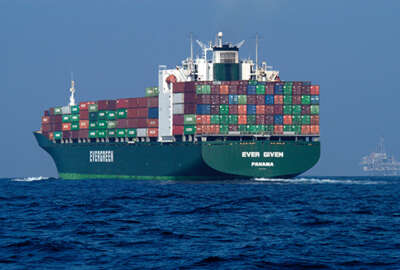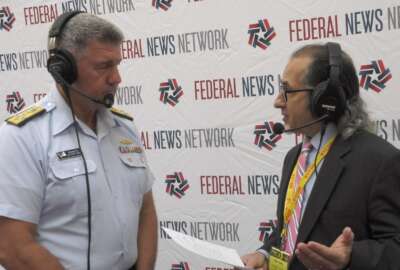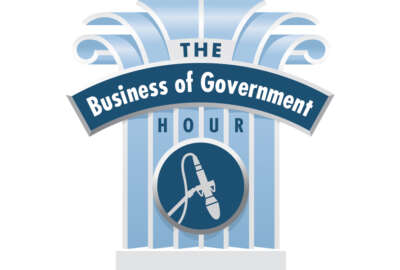Rear Admiral Carola List talks Coast Guard priorities for 2022
It may not be as big as the Navy, but the Coast Guard has facilities, people and vessels all over the world. Coasties have also been keeping a high tempo of...
Best listening experience is on Chrome, Firefox or Safari. Subscribe to Federal Drive’s daily audio interviews on Apple Podcasts or PodcastOne.
It may not be as big as the Navy, but the Coast Guard has facilities, people, and vessels all over the world. Coasties have also been keeping a high tempo of activity — maintenance, repair, and modernization go on continuously. For more on the Coast Guard’s priorities for the coming year, and how all of this logistics works, Federal Drive with Tom Temin spoke with the assistant commandant for engineering and logistics, Rear Admiral Carola List, at the Sea Air Space conference.
Interview transcript:
Carola List: When we talk about our infrastructure, you mentioned 25,000, it’s really closer to about 42,000, just shy of. And that’s made up of about 6,800 buildings, so that would be like our sector command centers, our small boat stations, our aviation units. And then about 14,000 other assets, which include piers, docks, lift support systems, our roadways, ramp areas for hangars. And then, you add on top of that, about 20,000 aids to navigation, right? Which is critical to our maritime transportation system, right? So about a $5.4 trillion industry, it provides 31 million jobs. So, pretty critical Coast Guard role in our maritime transportation system.
Tom Temin: So if it floats, if it flies, if it sits there on the ground, if it sits there with pilings in the water, it’s under you?
Carola List: That is correct.
Tom Temin: Got it. Okay. And so how do you prioritize what you go after, with respect to reengineering, or rebuilding or just maintaining, or even constructing in a given year, that’s got to be a big facility exercise all by itself?
Carola List: It absolutely is. And I think we tend to, when you talk about readiness narratives, right, you want to put aircraft in the air, you want to get cutters underway to execute the mission. And then you got the infrastructure behind, right, and so, you have to prioritize based on those readiness initiatives. And then in terms of our infrastructure, one of the things we do is we try and maintain a condition index of 80% on our most critical infrastructure, and that’s based by the U.S. Army Corps of Engineers. And so 80% basically means that, that facility is ready and able to execute the mission when needed. And so we kind of target that. Coupled with that, we’ve been working over the last few years with a hurricane supplemental. And as you know, we’ve had a lot of hurricane damage targeted on the southeast and Gulf Coast. And that’s about a $1.2 billion price tag. So, that’s been kind of our priority over the last couple years, just to get at that to make sure our infrastructure is able to continue to provide support to get the mission done. And in terms of prioritizing that, it’s give and take, right? You work within a constrained budget, and you have to prioritize to get those things accomplished.
Tom Temin: And given the budget cycles of federal agencies and the Coast Guard, military or civilian, it’s really hard to match the spending plans with what the weather decides to do. And so by the time something could happen that could set you back in terms of weather, severe condition, how do you overcome that budget challenge when you’ve got to devote resources to mitigating disaster, but it might pull from something that you did anticipate that was normally budgeted?
Carola List: Yeah, I think that’s a tough one, right? So we’re not funded and we certainly have a backlog in our infrastructure, right, that we’re that we’re kind of playing catch up in. We got some good funding here recently to help kind of get at that. But one of the things that we try and do is we, on all our assets, we do vulnerability assessments. And so when we do rebuilds and hardening of our infrastructure, it’s really to meet and sustain natural disasters. And so that helps us in terms of keeping our assets up and running.
Tom Temin: Given the name Coast Guard, then natural disasters are kind of part of your DNA in many ways. Disasters go back before climate change.
Carola List: Oh, absolutely. And most of our assets are located along the east, west coast, and southern coast of the United States. So absolutely.
Tom Temin: And over the years, and especially in the recent years, what types of process improvements or overhauls have you made to account for the resiliency that’s needed, given the fact that it looks like weather related disasters are getting more frequent and more severe?
Carola List: Absolutely. And that is part of all our vulnerability assessment calculation, right? So a great example is, through the hurricane supplemental, we did a rebuild of one of our units that got hit during Hurricane Harvey. And so when we did that rebuild, we considered climate change, the potential for greater and more severe hurricanes. That same unit got a subsequent hit from a hurricane and was able to maintain and sustain operations the entire duration of the hurricane, and so that’s how we get at that resiliency piece.
Tom Temin: So build it higher, build it with more tie-downs, build it stronger, and you stay ahead of the game?
Carola List: Absolutely, in every unit, because we’re so spread out across the entire U.S., everyone has to be taken individually when we make that assessment.
Tom Temin: And looking at the boat ship construction going on, there’s a couple of different types of cutters, national security cutter and so forth, that the Coast Guard is undergoing right now, I guess. There’s several hulls that are actually in process. What is your logistics and engineering input into how those eventual vessels will look? I mean, there’s a capability, which is somebody else, but then sustainability, repairability, and so on, must come under your command, and how do you get your input in while they’re building?
Carola List: Absolutely, it’s a Coast Guard team effort, right? And as we’re working a very comprehensive, integrated logistics support plan, we feed into that plan. And we’ve learned a lot for how we currently maintain our assets, both from a organic and a commercial aspect. In fact, just this past week, I had an opportunity to get down to Los Angeles, Long Beach, for a groundbreaking of our offshore patrol cutter maintenance support building. So that’s about a 12,000 square foot building down there. And we’re taking the vulnerability assessment into consideration. And that’s really critical in supporting our first two offshore patrol cutters.
Tom Temin: Because I’ve read that with subsequent cutters being built, and there’s a fleet of these, and also the national security cutters, they’re actually not all identical. Because as you learn from construction, there might be modifications, or maybe one will be deployed in this manner and one in that manner. So does that complicate and maybe raise the cost of future maintenance as the ships vary from hull to hull, even though they’re ostensibly the same program?
Carola List: Yeah, it’s a good question. Part of it is standardization among those cutter fleets, right? And then we have naval engineering detachments, maintenance and weapons augmentation teams. And those are standard practices regardless of the type of asset. And so part of that buys us efficiency, even though we may have structural changes, or changes that are varied in terms of equipment on those specific cutters.
Tom Temin: Got it. So then, do you deal directly with the builders and their subcontractors in the engineering and logistics support planning?
Carola List: Absolutely, and working hand-in-hand with our acquisition team as we bring those assets on. And then they work with us as kind of the technical authority on the engineering side to make sure that we’re getting the right product, and right support structure for the Coast Guard assets.
Tom Temin: And just tell us a little bit about your organization, how many people in it, and where are they located, and how do you oversee all of this?
Carola List: Good question. And so our headquarter staff is relatively small, but we have logistics centers. So we have an Aviation Logistics Center, we have a Shore Infrastructure Logistics Center Naval. And so those are kind of our center hubs of expertise that get at both depot level and the organic maintenance. And then those units that are talked about the NED’s — the naval engineering detachments — the MAT’s, the WAT’s, our augmentation teams that we have located throughout the country to provide specific support, especially where we have a congregation of assets located. And so, a lot of smart folks out there, a lot of leaders out there getting it done, and it makes my job extremely easy, so.
Tom Temin: And getting back to this construction phase, do you also secure the rights to do as much maintenance in house as possible? That’s always an issue. What do you guarantee the contractor will have the right to repair and maintain, versus what the service will?
Carola List: Yeah, so that’s all worked out through the acquisition process and how that’s balanced. We do most of our O level — operational level maintenance — is done organically, right? But we do use, and it’s critical that we get industry and commercial support in terms of specifically dry dock capability, right? Which I think, we all I think are challenged with, when you look across the Navy and the Coast Guard, in terms of just yard availability. And so that becomes pretty critical.
Tom Temin: Now you have an aviation background, so we haven’t talked about helicopters. And we forget sometimes the Coast Guard does have lots of things that fly. What’s going on in aviation planning? Talk about what’s ahead first.
Carola List: As we look across our aviation assets, both from a rotary wing and fixed wing perspective, so our rotary wing aircraft, we’ve had the H-65 Dolphin and [H]-60 Jayhawk now for a number of years, and we’re going through a service life extension program to get those through the mid 2030’s, and for the [H]-65, early 2040. And so, as we maintain those aircraft to get the life limit out of those, we have to look at how are we going to move in the future. And I think as you look, and I think as the commandant has mentioned, looking at a single rotary wing aircraft for future, and as we look at what DoD is doing with vertical lift, and then of course with our fixed wing assets is continuing missionisation of those assets to get the mission done as well, so.
Tom Temin: So your own aviation background must have prepared you well for this because in many ways in aviation, much more so than maybe afloat types of things, the relationship between the aviator and the maintainer is a little bit more day-to-day, a little bit more intimate, a little bit closer, isn’t it?
Carola List: So absolutely. So for aviation, aviation aeronautical engineer. And an operator, so I consider [myself] an operator first and foremost.
Tom Temin: You’ve had that stick in your hand, right?
Carola List: Absolutely, and it’s working hand-in-hand with the crew. I think certainly, that has helped. And from a logistic standpoint, I’ve had the opportunity to run an air detachment on a Navy vessel, was faced with the challenge of relocating a forward operating base after 9/11. So just tying in the logistics and the continued maintenance to ensure that we had seamless operations to continue mission, so. Certainly that, and then also my experience in acquisitions, running our responsible medium program as well. So I think all that coupled has given me the skills I need for this position today.
Tom Temin: All right, so what’s your message to young women that have a STEM, perhaps, bent? Or an operational bent, or just adventure bent? Should they join the Coast Guard now?
Carola List: Oh, absolutely. I may be biased to the Coast Guard, but, I’d say certainly, I think the message I have is there are no doors that are closed. So pursue your dream, pursue what you want, and if you can’t achieve it the first time through, then just keep that determination, keep trying, and at one point you’ll be successful to achieve anything that you put your mind to.
Tom Temin: Rear Admiral Carola List is assistant commandant for engineering and logistics at the Coast Guard. I spoke with her at the Navy League’s Sea Air Space conference.
Copyright © 2025 Federal News Network. All rights reserved. This website is not intended for users located within the European Economic Area.
Tom Temin is host of the Federal Drive and has been providing insight on federal technology and management issues for more than 30 years.
Follow @tteminWFED







